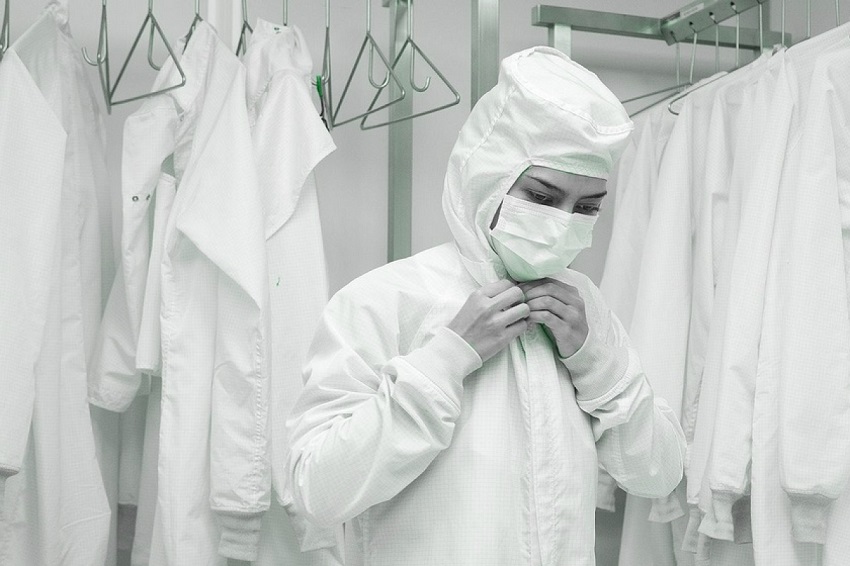Cleanroom garments play a crucial role in maintaining the cleanliness and integrity of controlled environments such as laboratories, pharmaceutical facilities, and electronic manufacturing plants. These specially designed garments are worn to prevent contamination and ensure the quality of the products and processes carried out in cleanrooms. But have you ever wondered how cleanroom garments themselves are kept clean? In this article, we will explore the methods used to clean cleanroom garments and the importance of maintaining their hygiene.
Understanding the Significance of Cleanroom Garments
Cleanroom suits garments are designed to minimize the release of particles and fibers that can potentially contaminate the environment. These garments typically consist of coveralls, hoods, gloves, masks, and shoe covers, all made from specialized materials. The cleanroom suits are created to provide a barrier between the wearer and the surrounding environment, protecting both the person and the products or experiments from contamination.
Regular Cleaning to Maintain Cleanliness
To ensure the continued effectiveness of cleanroom garments, regular cleaning is essential. The cleaning process removes any accumulated contaminants, particles, and microbes from the garments, preventing them from becoming a potential source of contamination. There are different methods used for cleaning cleanroom garments, each with its own advantages and considerations.
Laundering Cleanroom Garments
One common method of cleaning cleanroom garments is laundering. Laundering involves washing the garments in an industrial-grade washing machine specifically designed for cleanroom apparel. The process follows strict guidelines to maintain the cleanliness of the garments without compromising their integrity.
During laundering, the garments are subjected to a series of cycles that include pre-wash, wash, rinse, and dry phases. Special detergents and additives are used to remove contaminants effectively while preserving the properties of the garments, such as their antistatic or fire-resistant capabilities. The cleaning process also eliminates any potential biohazards that may be present on the garments.
Sterilizing Cleanroom Garments
In certain industries where sterility is of utmost importance, cleanroom garments may undergo sterilization processes in addition to laundering. Sterilization ensures the complete elimination of microorganisms, including bacteria, viruses, and spores, on the garments. There are several methods used for sterilizing cleanroom garments, including:
- Autoclaving: This method involves subjecting the garments to high-temperature steam under pressure, effectively killing any microorganisms present. Autoclaving is commonly used in healthcare and pharmaceutical industries.
- Gamma irradiation: Gamma irradiation utilizes high-energy gamma rays to destroy microorganisms on the garments. This method is often employed in industries where heat or moisture-sensitive materials are used.
- Ethylene oxide sterilization: Ethylene oxide gas is a potent sterilizing agent that penetrates the garments and kills microorganisms. This method is suitable for heat or moisture-sensitive materials but requires specialized equipment.
Validating Cleaning Processes
Validating the cleaning processes for cleanroom garments is of utmost importance to ensure their effectiveness. Validation involves testing the garments before and after cleaning to assess their particle and microbial cleanliness. Particle counting and microbiological testing are commonly used methods to verify the cleanliness of the garments.
By validating the cleaning processes, it can be ensured that the garments meet the required cleanliness standards and are suitable for use in cleanroom environments. This validation process plays a critical role in maintaining the quality and integrity of the overall cleanroom operations.
Conclusion
Cleanroom garments are essential for maintaining a controlled and contaminant-free environment. The cleaning of these garments through laundering and, if necessary, sterilization is crucial to prevent contamination and ensure optimal performance. Following strict cleaning guidelines and validating the cleaning processes are key factors in maintaining the cleanliness and quality of cleanroom garments.
Frequently Asked Questions
- How often should cleanroom garments be cleaned? Cleanroom garments should be cleaned as per the manufacturer’s recommendations and industry guidelines. Typically, garments are cleaned after every use or on a regular basis to ensure their cleanliness.
- Can cleanroom garments be reused? Yes, cleanroom garments can be reused after proper cleaning and validation. However, the number of times they can be reused depends on several factors, such as the type of garment and the level of contamination it is exposed to.
- What materials are cleanroom garments made of? Cleanroom garments are commonly made from synthetic materials such as polyester, polyethylene, or a combination of different fibers. These materials offer excellent particle filtration, durability, and comfort.
- Are cleanroom garments flame-resistant? Some cleanroom garments are designed to be flame-resistant, especially in industries where hazardous materials are handled. These flame-resistant garments offer protection to the wearer from potential fire hazards.
- Can cleanroom garments be customized for specific applications? Yes, cleanroom garments can be customized to meet specific requirements. This can include modifications such as additional pockets, specialized closures, or specific colors for easy identification.

